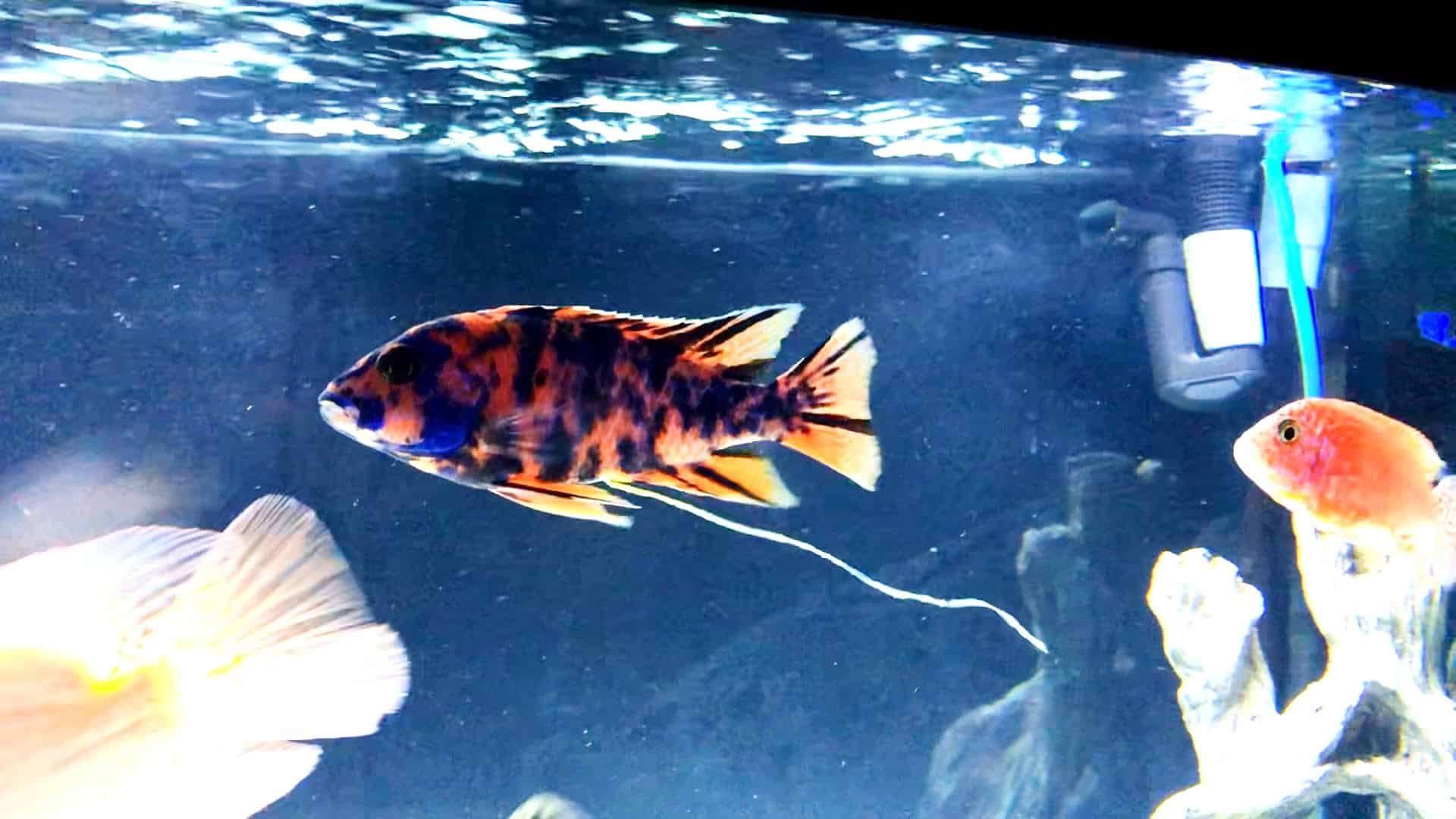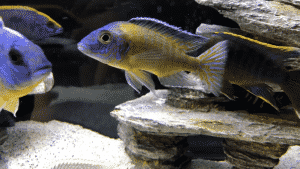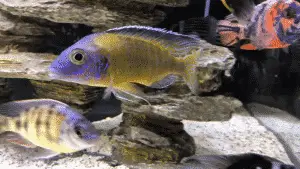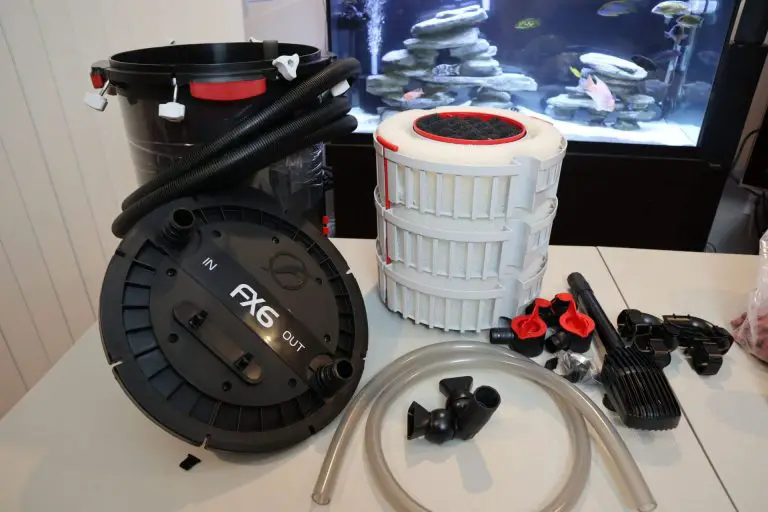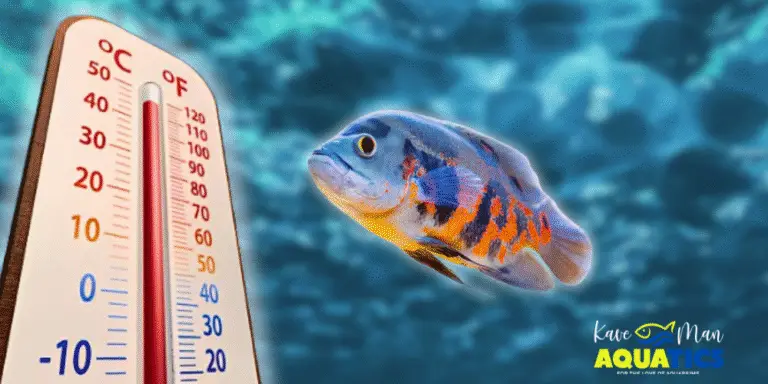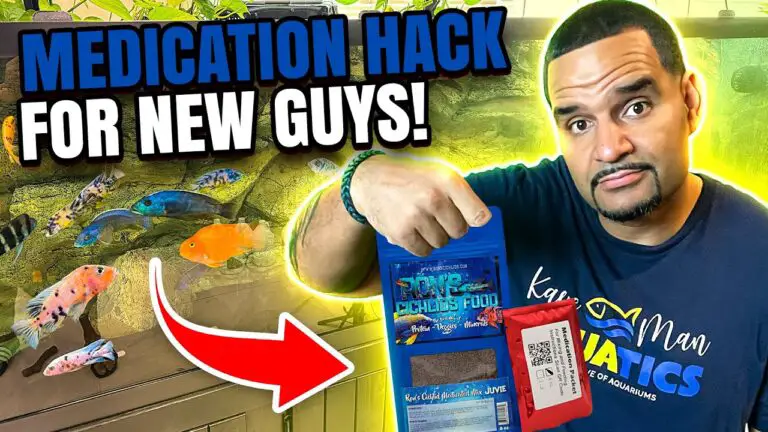How To Diagnose And Treat Internal Parasites In Fish
Internal Parasites in fish are nasty business. They can be distressing to the fish in your home aquarium, and they can be stressful to you too! How to diagnose and treat internal parasites in fish is an important skill in the aquarium hobby.
No one wants to see their fish suffer, that’s for sure. There are many common types of internal parasites and ailments that you may eventually run into while keeping fish, but the good news is that most of these diseases and parasites are generally treatable with a series of medications.
Noticing something weird happening in your tank can certainly be a scary situation. It is important to remain calm when you notice something wrong, as panicking and treating for the wrong type of ailment can do more harm than good. Collect your thoughts, do some research based on the symptoms that you have noticed, or contact your local fish store for more information.
In this article, we are going to learn more about some of these common symptoms and how to tell when you actually have internal parasites in fish versus other common ailments. We will also learn a little more about these parasites, and more importantly, how to help keep them out of and away from your fish.
How To Prevent Internal Parasite Infections

Treating a case of internal parasites in fish is one thing, but preventing them in the first place is much better and less stressful to your fish!
Most internal parasites come from wild-caught species of fish and are then passed to other members of their community. Some species of Siamese Fighting Fish, Cichlids, and even some catfish species like Otocinclus are usually wild-caught to some degree, or kept in the same tanks as wild-caught fish before they make it to fish stores and online retailers.
This is done by those who catch and breed these species in Asia, Africa, and South America. This means that a full aquarium or breeding tank full of happy and healthy fish can be infected with internal parasites and other diseases by introducing only a single infected fish to the mix.
Many of these parasites take time to manifest and be noticeable by fish keepers, and by that time it may be too late to prevent the spread to other fish in your aquarium. This is the most common way that exotic parasites and diseases make their way to home aquariums worldwide.
Do Your Research
It is because of this practice mentioned above that it is important to research examples of healthy fish prior to purchasing them at the fish store, especially if it is a species that is new to you. This is essential so that you can be mindful while selecting specific fish out of the holding tank and ensure that you bring a healthy specimen home.
Look at several pictures, and more importantly, watch some videos of the fish swimming and interacting with one another so you know the activity level to expect from a healthy specimen. Some species will actively avoid an unhealthy member of their community and this behavior can be noticeable while in a tank at the store.
If you see videos of a specific species of fish being energetic and exploring their environment online, yet the fish at the store are lethargic and seem discolored or misshapen then you know that you should avoid those particular fish! This is great advice for plants and invertebrates as well. Doing research always helps prevent headaches in the future.
Maintaining A Quarantine Tank
If you have done much research into the aquarium hobby online, you have inevitably seen mentions of the “quarantine tank.” This is the concept of keeping a separate isolation tank for new fish or for treating individual fish with a disease to prevent it from spreading to other tank mates.
These quarantine tanks may seem like overkill for the average home fish keeper, however, the low cost and upkeep level of an independent isolation tank is nothing compared to treating an entire established tank for internal parasites in fish, Ich, or other common freshwater fish diseases.

It is generally recommended to quarantine any new fish for at least two weeks before introducing them to your primary aquarium. In this time it is vital to observe your new fish for signs of disease, parasites, and other health issues.
If any issues are noticed it is much easier and more cost-effective to treat these fish in the smaller isolation tank. This is because much less medication can be used to treat the issue, plus other fish are not exposed to medications that they do not need.
Keep Stable Water Parameters
It should be the ultimate goal of any fish keeper in the aquarium hobby to provide the best life for your fish friends as possible. This means maintaining water temperatures, ammonia, and nitrite levels, feeding a healthy diet full of nutritionally dense foods, and keeping a close eye out for any signs of stress or disease.
Stress Levels
It may seem odd that reducing stress levels has anything to do with internal parasites, but there is some direct correlation between the two. A stress-free fish is generally a healthy fish, and that in turn means that the fish are much less likely to suffer severe symptoms of any disease or internal parasite.
This directly ties in to stable water parameters inside your aquarium, as fluctuating temperatures and ammonia levels will inevitably lead to stress in your aquatic life.
A Side Note About Stress And Ich
While we are primarily focused on internal parasites in this article, it is worth talking about the most common external parasite in the fish-keeping hobby, that being Ich. This parasite is so common that it is one of the most searched fish-keeping-related terms via online search engines.
Before we actually treat a parasite or disease, we must positively identify what we are medicating for. We bring Ich up because it is very commonly confused with other less common diseases and parasites like velvet and even tuberculosis.
It is commonly believed that most aquariums contain “Ichthyophthirius multifiliis,” which is a really fancy Latin term for the spore-like pods of Ich that lie dormant in aquariums in homes and fish stores alike.
Many fish keepers believe that almost every aquarium in the world has the potential to develop Ich if certain conditions are met like high stress levels among your fish and fluctuations in water temperature. Stress levels can also directly impact the likelihood of your fish developing Ich as well.
It is a nearly unavoidable part of fishkeeping. Ich burrows into the skin of your fish and then spreads throughout its life cycle, attaching “spores” to the substrate, plants, decorations, and filter media in the process. This burrowing effect then leaves open wounds on the skin of your fish that can become infected.
Signs And Symptoms Of Internal Parasites
Before we jump right into the symptoms of parasites, let’s first talk about parasites, and more specifically protozoan organisms. While the most commonly known of these is the external parasite known as Ich, there are many more out there.
These protozoan organisms are single-cell organisms that burrow or live inside of a host and leech nutrition from its host organism. The most common internal protozoan parasites that you may encounter while keeping fish are the Hexamita species and the Spironucleus species.
These two are a dastardly duo that can cause a lot of headaches for the home aquarium hobbyist. They can be lethal if left unchecked for too long, but they are generally identified well before they get to that level. With all of that said, let’s look at some of the most common symptoms of internal parasites.
Sunken Belly
If you notice that the belly of one of your fish is sunken it can definitely be a cause for alarm. It may seem that the overall shape of your fish has adjusted with the stomach area now appearing concave and “sucked in” to the abdomen. This can be caused by a few different diseases and parasites, notably flatworms that live in the digestive tract of the fish.
These worms eat the food within the fish’s stomach before the fish has a chance to digest it and absorb the nutrients. This can be difficult to detect initially as your fish will likely appear to be eating like normal, and sometimes even more than normal due to the beginning stages of malnourishment. Over time though the fish will slowly begin to starve, even if it is eating regularly!
White Stringy Poop
This is a very noticeable effect of some internal parasites. Often times the stringy poop will stay attached to the fish and trail underneath it, making it quite easy to spot. This poop that passes from the fish will also oftentimes sit on top of the substrate in your aquarium and will be easily disturbed and kicked up during routine maintenance.
This type of poop is associated with parasites such as Hexamita, tapeworms, roundworms, and Spironucleus, which can also cause hole-in-the-head disease.
It should be noted however that many types of fish poop naturally look this way and indicate that the fish is not eating enough rather than being a parasite.
The white “casing” that usually surrounds the waste is what you are seeing, and sometimes indicates that the mucus cells that create this casing are passing without containing any food waste. This is also not a great sign to see, as it means your fish are not eating properly but is not always a sign of parasite infestation.
Lack Of Appetite
It is no surprise that fish share this characteristic with humans. If we are sick, or are in poor health, it is common for us to have a lack of appetite. This is alarming in fish, however, as this is a good indicator for parasites like tapeworms and roundworms.
These internal parasites in fish live in the stomach and lower digestive tract and can sometimes leave them perpetually “full” and unwilling to eat. These parasites essentially swell up as they eat and grow inside of your fish. This unfortunately leaves very little room in the stomach for food to go. This leads to all sorts of issues related to malnourishment like rapid weight loss and an even higher susceptibility to other diseases and Ich.
A lack of appetite can also be indicative of other parasites, Ich, and general stress in your fish. If you notice that your fish are not readily accepting food you should check the temperature of your water, as well as perform a test of ammonia, nitrite, pH, and nitrate immediately to see if there is an obvious reason for the issue.
A fish that is stressed from high levels of water pollutants or high temperatures will usually refuse food and act strangely.
Less Common Symptoms
Other symptoms can manifest in a case of internal parasites, and they often indicate other issues that may be occurring in conjunction with an infestation of parasites. Indicators like fish swimming at the surface and gasping for air, “diving” against substrate or decorations to scratch their skin or scales and the appearance of lumps or red spots on the body are all indicators of another potential infection.
These are all important factors to pay attention to. A case of parasites will often stress a fish and weaken their immune systems to a point where they can become very prone to contracting Ich, bacterial and fungal infections of the skin, and other more common ailments.
Isolating Infected Fish
If you do in fact encounter a case of internal parasites it is of utmost importance that you act swiftly! Separating the fish in question early enough can completely prevent the spread of parasites to other fish in your aquarium.
Separating unhealthy fish also reduces the likelihood of parasites from burrowing into the substrate or affixing themselves to the decorations and plants inside your tank. This is where the quarantine tank we discussed above comes into play.
It is very important to ensure that your hospital tank is large enough to accommodate your largest species of fish. It would be a poor idea to maintain a 10-gallon hospital tank if you have Oscars or an Arowana!
For quarantine needs we can usually keep a slightly smaller tank size since there should be no substrate or decorations in the tank, effectively freeing up some swimming room. Do some independent research on this topic so that you can make the best choice with your space, time, and budget.
You should gently remove the fish from its primary tank and add it to the isolation tank. It is recommended to keep this isolation tank pretty bare, meaning no substrate or decorations. This is only a general rule, however, and if isolating more than one fish it can be necessary to use decorations like rocks or driftwood.
This is to allow different territory zones for your fish, an especially important consideration with cichlids and other aggressive fish. It is important to note that many medications will stain silicone seals and decorations in a tank too, so removing fish to a different tank to treat them can serve to prevent ugly discoloration in your tank.
This quarantine tank should ideally already be cycled, however, if you are setting one up in an emergency you will likely not have the time to establish a cycled tank. In this event, you may simply add some seeded filter media to the filter of your hospital tank and regularly perform water changes until a cycle is achieved.
Once the sick fish is isolated you can begin medicating the food or water with the appropriate medications (we will talk about them shortly!) and monitoring the fish to look for signs of improvement.
We also see the benefit of a hospital tank in this situation by using less medication at a time to treat our fish. Some of the medications that we use in the aquarium hobby can be quite expensive. Using smaller amounts at a time saves us some money in the long run.
An Important Side Note Regarding Hospital Tanks
To put it simply, after you use a hospital tank you generally need to nuke it. You can run carbon in the filter to absorb leftover medications, but it is advisable to replace filter media and clean the filter housing itself. Any substrate or decorations that were used in the tank need to be sanitized.
The tank itself should be emptied and scrubbed with hot water (but not soap or chemicals!) all in an effort to not harbor diseases in your isolation tank. We do this to prevent parasites and diseases from surviving in the hospital tank.
This is done because if you don’t sanitize the hospital tank between uses it can lead to subsequent outbreaks in the future when the tank is used again. Some parasites and diseases are surprisingly resilient and can survive in a filter or even on decorations for weeks at a time. The last thing we want is a sick fish getting even more sick.
Treating The Entire Tank With Metroplex, Focus And Garlic Guard
These are all products that are produced by Seachem and are widely used and recommended in the aquarium hobby. They each do something different, so maintaining a good stock of them is always a great idea when keeping fish. The combination of these helpful medications and an isolation tank is a perfect first line of defense against many parasites and diseases that you may encounter while keeping fish.
Medicating The Water
Metroplex is a great resource for treating protozoan parasites in your home aquarium. This medication can be used both in the water column of your tank to be slowly absorbed for the treatment of bacterial disease, or it can be mixed with focus, garlic guard, and fish food to create an edible medication used to treat internal parasites.
Medicating The Food
As crazy as it sounds, many fish are proven to love the scent of garlic. Seachem’s Garlic Guard is a powerful odor and flavor enhancer used to make medicated food more attractive to fish.
It also has the benefit of encouraging the appetite of any fish that may be suffering from a decreased appetite due to illness or parasites. Garlic also contains many health benefits for fish in the form of disease and parasite resistance.
 Medicating food is also where Focus will come into play. Focus binds medication to fish food, ensuring that powdered medication will be ingested by sick fish. This is a great resource in use with Metroplex as well as other medications that you may use down the road in treating other diseases in your tank.
Medicating food is also where Focus will come into play. Focus binds medication to fish food, ensuring that powdered medication will be ingested by sick fish. This is a great resource in use with Metroplex as well as other medications that you may use down the road in treating other diseases in your tank.
While mixing medications is generally not advisable, Focus is a notable exception. Garlic Guard is also not a medication and is fine to mix with edible medications unless otherwise noted.
Essentially the goal here is to create an all-in-one medication/food supplement to combat the internal parasites. You can take a bowl and add the appropriate amounts of fish food, Metroplex, Garlic Guard and Focus and blend it together. Add a 1:1 ratio of Focus, Metroplex, and food with enough Garlic Guard to saturate the mixture.
The Garlic Guard will mask any odd scent produced by the medications. The Focus will bind the Metroplex to the food allowing it to be ingested by the fish needing treatment.
Finally, the Metroplex treats the root cause of the issue by destroying the internal parasites that have been plaguing you and your fish. This treatment can be repeated as needed by following the dosing requirements listed on the Focus and Metroplex containers.
2 More Methods of Treating the Most Stubborn of Internal Parasites in Fish
When all else fails, you may have a less common type of parasite not treated by any of the above. In this case, I use Rons Medicated Food which contains a mixture of multiple medications to attack a very wide range of internal parasites and external diseases as well.
Medications include:
Watch below for how to properly mix and feed this medicated food mixture.
A Last Resort For Internal Parasites
If you’ve attempted all of the above with no success there is one more method of attacking these pesky internal parasites in fish.
This method requires you to handle your fish directly and inject the medication through its mouth, past the gills, so the medication can enter its stomach directly.
Using a mixture of:
- 3% solution of tank water and Epsom Salt
- Internal parasite medication (Seachem Metroplex or API General Cure)
Using a plastic Pipet or Dropper you can enter through its mouth and inject this solution directly into the gut. This is procedure is better explained with video. Watch Below!
There Is Hope!
Dealing with any parasite or disease is stressful for both the fish and the fish keeper. It is nearly unavoidable that you will eventually run into some sort of illness in your home aquarium. Luckily most internal parasites in fish are treatable and curable if caught early enough in the life cycle.
Realistically most diseases are treatable to some point, and many times your fish can make a full recovery from all but the most dangerous infections and infestations.
After a successful treatment regimen, it is vital that you keep a close eye of your recovered fish and their ecosystem. The resurgence of parasites and sickness is uncommon but is possible sometimes.
Parasite spores can settle in the substrate or on decorations, fungal infections can emerge on completely different fish in your tank and the same can be said for some internal parasites. Keeping an eye on your fish and water parameters is one of the most important factors in being a successful fish keeper, plus who doesn’t love watching their aquarium?

